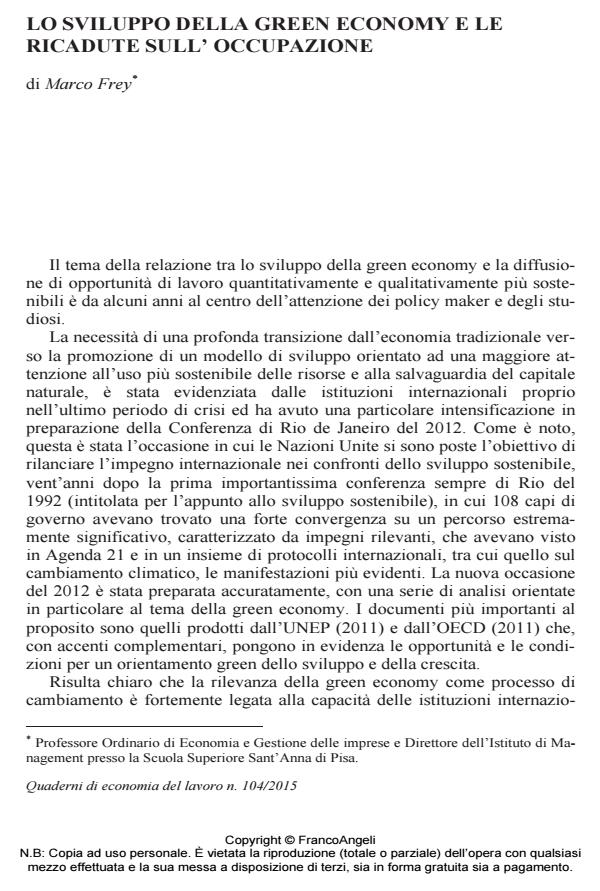Lo sviluppo della green economy e le ricadute sull’ occupazione
Journal title QUADERNI DI ECONOMIA DEL LAVORO
Author/s Marco Frey
Publishing Year 2016 Issue 2015/104
Language Italian Pages 34 P. 11-44 File size 413 KB
DOI 10.3280/QUA2015-104002
DOI is like a bar code for intellectual property: to have more infomation
click here
Below, you can see the article first page
If you want to buy this article in PDF format, you can do it, following the instructions to buy download credits

FrancoAngeli is member of Publishers International Linking Association, Inc (PILA), a not-for-profit association which run the CrossRef service enabling links to and from online scholarly content.
Marco Frey, Lo sviluppo della green economy e le ricadute sull’ occupazione in "QUADERNI DI ECONOMIA DEL LAVORO" 104/2015, pp 11-44, DOI: 10.3280/QUA2015-104002